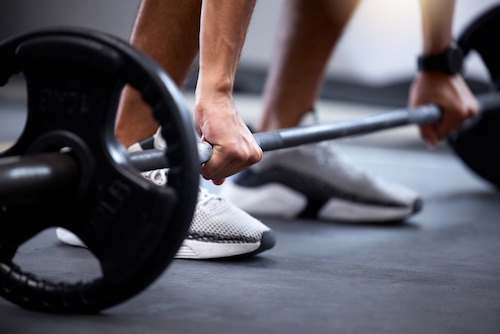


Achieving the body you want is possible through dedication and hard work, but it’s common for people to feel like they don’t know what they’re doing and get lost in the minutiae.
Finding a six-day workout routine that works for you can help you get started or refresh your current routine. That's why we're breaking down the perfect six-day gym workout schedule you can use to see real gains and meet your goals.
At first glance, it may not make much sense why you'd want to split workouts by target area. After all, isn't it more efficient to work out your whole body simultaneously?
To get stronger, your muscles need to exert effort. This creates small tears in them that are then healed back stronger and denser. Working out accomplishes the first part of this cycle, but resting after is what achieves the second. If you continuously work all your muscle groups without rest, your gains will be hampered, and you may even injure yourself from overtraining.
Patience Is Key
Frustrating as it may be, patience is key. No one can expect to get stronger overnight. Getting fit is all about pacing yourself and listening to your body, which means working smarter, not (only) harder. Soreness is normal, but if at any point you feel pain while working out, stop and rest.
In weight training, exercises are divided into sets and reps. Reps refer to the amount of time you repeat an exercise motion, and sets refer to a group of reps.
So, for example, if you’re doing three sets of 10 reps of pushups, you will perform 10 pushups consecutively, wait for a little over a minute, and then repeat 10 pushups again two more times with a break in between to complete three sets.
A good schedule keeps you on track to maximize your gains and feel your best. Here's a sample 6-day workout schedule that can help you do just that:
Day 1: Upper Body - Chest and Triceps
For a good chest and tricep workout, try:
Day 2: Lower Body - Cardio and Glutes, Hamstrings, and Quads
Cardio helps you work longer and harder, so getting in time on the treadmill, stair climber, or elliptical is especially important.
Glutes, hamstrings, and quads:
Day 3: Active Recovery or Flexibility Work
Active recovery means taking it easy, but don't confuse that for just sitting on the couch and snacking.
To let yourself rest a bit, try less strenuous exercises like yoga, pilates, jogging, hiking, swimming, or other fun ways to be active that aren't as intense as a full workout. This is a good day to work on stretching to improve flexibility.
Day 4: Upper Body - Shoulders, Biceps and Abs
For day four, focus on your upper body, specifically targeting your shoulders, biceps, and abs. Try this routine:
Day 5: Lower Body - Calves and Hamstrings
Your calves, hamstrings, and quads may all be in the legs, but the exercises that work them only overlap so much, so focus on each isolated part while exercising.
Calf exercises:
Day 6: Back
The muscles on your back support and protect your spine. Building back muscles is essential for good posture, better breathing, and continued health.
Back exercises:
Day 7: Rest
You've been resting every day of your training, as the muscle groups not targeted on a specific day have the chance to recover while you train others. Even so, Day 7 is dedicated to a full and complete rest. There's only so much strain you can take before giving out, so having a day to take it easy and relax is good, both physically and mentally.
Many people achieve great results working out alone, but many more still struggle. Even the proper schedule may not be all you need to stay on track.
Personal training helps you to overcome the many roadblocks leading you to your fitness goals, whether those are the dedication to stick to the plan, the motivation and encouragement to help you out, or the extra insight into how to make sustainable lifestyle choices that improve your gains and health.
Fitness is a significant journey you don't have to make alone. Call Cajun Fitness today for personal training and fitness classes.
Receive a FREE Guest Pass